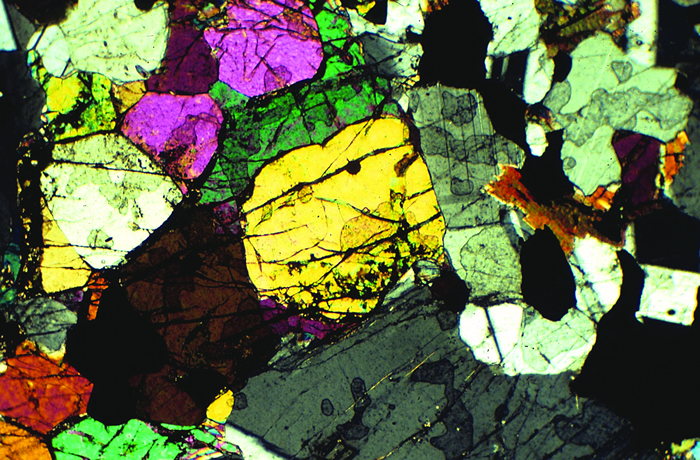What Is Circularly Polarized Light?
by Jason Ross
February 2011
This article appears in the February 4, 2011 issue of Executive Intelligence Review and is reprinted with permission.
Research Report
- The Extended Sensorium: Overview
- Synesthesia: Beyond the Five Senses—Oyang Teng
- Helen Keller: Mind over Instrumentation—Meghan Rouillard
- Following the Beat of a Different Drummer—Peter Martinson
- Polarization Sensitivity: a Strong and Weak Sense—Meghan Rouillard
- What is Circularly Polarized Light?—Jason Ross
- Insects and Infrared—Oyang Teng
- Magnetoreception—Benjamin Deniston
- Unheard Melodies: Electric and Magnetic Senses in Humans—Sky Shields
- The Sounds of a Cosmic Chorus—Aaron Halevy
Beginnings
When light passes from one substance into another, its direction is perceived to change. This phenomenon, known as refraction, was first understood by Pierre de Fermat as arising from the different speeds of light when moving through different media. These coefficients of resistance were successfully determined for a variety of different materials, but one particular crystal, a type of calcite known as Iceland spar, did not fit neatly into the theory. This crystal has the amazing property of not simply bending light’s path, but of splitting it in two! (Figure 1)
These two paths of light, known as the “ordinary” and “extra-ordinary” rays, are always of equal intensity, when usual sources of light are used. This is not the case, however, when rays refracted through Iceland spar, are directed to a second piece of the crystal. If the two pieces are parallel, the rays do not split again, but continue on as either ordinary or extraordinary rays. If the second crystal is rotated by 90°, the once-ordinary light undergoes an extraordinary refraction, and the extraordinary light refracts as an ordinary ray. At 45°, both rays split, giving a total of four rays exiting the second crystal. In between, there are four rays, but of unequal intensities: At zero and 90°, two of the four rays vanish. Thus the rays of light refracted through Iceland spar are not of the same quality, but have additional directions associated with them (not just the direction of propagation), as revealed in their changing interaction with the crystal: They are thus said to be “polar.”
In the early 19th Century, Etienne-Louis Malus was studying Iceland spar, using beams of light reflected off the windows of a nearby building. To his surprise, the ray of light was not doubled, but refracted in the ordinary or extraordinary way, depending on how he held the crystal. Performing a further test with candlelight reflected off the surface of water, he found that at a shallow enough angle, the light reflecting from the water had a polarity, just like the light passing through Iceland spar. Similarly, the extraordinary ray passing through Iceland spar would not reflect at all off water at this shallow angle. He discovered that almost all surfaces (except mirrored metal surfaces) can reflect polarized light (Figure 2).
Fresnel’s Discoveries
The shimmering colors of soap bubbles or of thin films of oil on water, arise from a phenomenon known as interference. Augustin Fresnel brought this phenomenon to a greater level of understanding by demonstrating the complete elimination of a beam of light by shining another upon it. Not just any two rays of light can interfere in this way: Fresnel showed that the two beams had to be of exactly equal color to interfere. If red light is made to interfere with white light, then blue-green light will remain. By setting up two paths of light, differing only slightly in their length, Fresnel could determine the least difference in lengths that could give rise to interference, and determined these characteristic lengths for a variety of colors. Color and distance are not the only factors, however: Two rays of light, having the same origin and color, but being polarized at right angles to each other, will not interfere (Figure 3).
Fresnel, a proponent of the wave theory of light, who composed devastating attacks on the emission theory, conceived of these waves not as Christiaan Huyghens did—as longitudinal waves, compressing and expanding in the direction of propagation, as do sound vibrations—but as transverse waves, having an oscillation perpendicular to the propagation direction. That is, like ocean waves, where water moves up and down as the wave moves horizontally, light has a perpendicular oscillation. This oscillation, having all different directions in a typical source of light, is split into its perpendicular components by passing through Iceland spar or by appropriate reflection. Thus, the rays polarized at right angles did not interfere, since they act in different planes.
FIGURE 4 flickr user kevinzim The colors in this microscope image of olivine and pyroxene appear from the polarized light used in the microscope. |
Fresnel then created a new kind of polarized light, which he called circularly polarized light.[1] Like unpolarized light, this new light would split in two when passed through Iceland spar, but, unlike normal light, would display interference colors if it were passed through substances like mica before passing through Iceland spar. To produce this circularly polarized light, Fresnel used an apparatus that produced two rays, polarized at right angles to each other, and with one retarded by a quarter-wavelength. Together, they act as one ray of light, whose plane of polarization rotates: circular polarization. The secret to this special quality of light, quite useful now in microscopy and a variety of other applications, already existed in the tail of the lowly mantis shrimp! (Figure 4)
[1]. This was to distinguish it from the previous, simpler kind, now known as linearly polarized.
